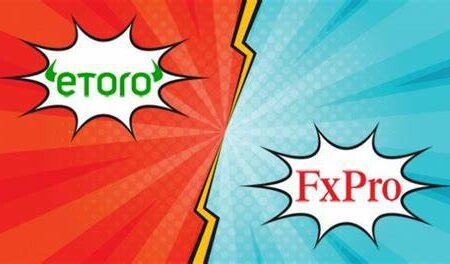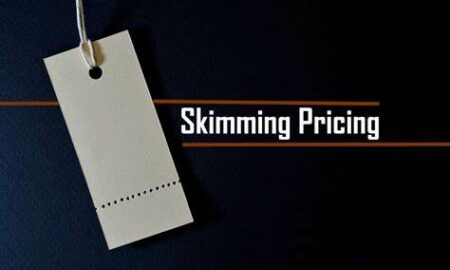Posts By Ali Bajwa
-

 1.6KBusiness news
1.6KBusiness newsNavigating Business Challenges with a Guide to Effective Consulting
Running a business can be tough. There are countless challenges that can arise, and as a business owner, it can be difficult...
-

 1.6KBusiness news
1.6KBusiness newsFrom Clicks to Conversions: How Google Ads Can Drive Sales for Your Business
In a world where internet presence can make or break a business, it’s crucial to seek new and innovative ways to contact...
-

 1.7KDigital Marketing
1.7KDigital MarketingBreaking Down Waltham’s Competitive Landscape: How to Outrank Your Local Competitors with SEO
A thorough understanding of your local landscape is the key to any successful SEO campaign. Knowing how other businesses in your industry...
-

 4.9KHow To
4.9KHow ToHow to Download Video from Pinterest? Detailed Guide
Pinterest is a social media platform where users can discover, save, and share ideas and inspirations in the form of images and...
-

 1.7KBusiness news
1.7KBusiness newsUse a Percentage Calculator App for Your Benefit
Have you ever found yourself stuck in a mathematical query when calculating a percentage? Do you often need help working with a...
-

 1.5KCryptocurrency
1.5KCryptocurrencyeToro Vs Fxview – The Best eToro Alternative?
eToro and Fxview, both brokers are often compared to each other to determine the better broker, but it really depends upon the...
-

 1.0KLatest News
1.0KLatest NewsChoosing the Right Paint Color for Your Home
Choosing the right paint color for your home can be a daunting task. With so many colors to choose from, it’s easy...
-

 1.1KHealthTech
1.1KHealthTechUterine Fibroid Treatment
Are you looking for an ideal uterine fibroid treatment? Are you aware of fibroids and their symptoms? What kind of fibroid treatment to look for?...
-

 1.4KBusiness news
1.4KBusiness newsThe Biography of Arif Patel (Arif Umarji Patel) – Preston Trading in UK
Arif Patel was born on July 12, 1985 in Dubai, UAE in a middle class family. Right from his childhood, he has...
-

 1.1KDigital Marketing
1.1KDigital MarketingCapture The Digital Summit With The Top Five Dynamic Seo Strategies For 2023!
SEO is one crucial element for any business and its portal to be successful in the constantly evolving digital era. Billions of...
-

 1.0KBusiness news
1.0KBusiness newsHome Remodeling Guide
Home remodeling is a popular practice among homeowners and for good reason. There are many reasons why people choose to remodel their...
-

 827Latest News
827Latest NewsThe Significance of Foundation Repair for Your Home’s Stability
Foundation repair is an important aspect of home ownership. A strong and stable foundation is essential for the safety and longevity of...
-

 2.3KBusiness news
2.3KBusiness newsTransform Your Space with LED Tape Light: A Complete Guide
LED Tape Light is a fantastic lighting solution for many different projects and applications, from commercial to residential. It is an easy-to-install...
-

 890Business news
890Business newsAvoiding Costly Repairs: The Benefits of Pressure Washing for Your Property’s Longevity
Pressure washing is an essential maintenance and cleaning service for your property. Pressure washing can help to prevent costly repairs and prolong...
-

 805Latest News
805Latest NewsThe Benefits of Working with an Israeli Law Firm
When it comes to legal services, there is no shortage of options available. Whether you are looking for a lawyer in your...
-

 1.4KLatest News
1.4KLatest NewsThe Social History of Truth: Uncovering its Impact & Evolution
I. Introduction The concept of truth has been a topic of debate and inquiry for centuries. The social history of truth has...
-

 1.1KBusiness news
1.1KBusiness newsThe Man Behind O9 Market: Jitesh Chouhan’s Secrets to Entrepreneurial Success
Jitesh Chouhan, a young entrepreneur from Odisha, India, has been creating waves in the digital marketing industry with his innovative ideas and...
-

 1.0KBusiness news
1.0KBusiness newsUnderstanding the UK Foreign Exchange Market: A Guide
The United Kingdom (UK) foreign exchange (forex) market is one of the largest and most liquid in the world. It operates 24...
-

 911Business news
911Business newsUnderstanding Skimming Price and its Impact on Cohort Analysis
Cohort analysis is a powerful tool for marketers and business owners to understand the behavior and performance of different groups of customers...


















